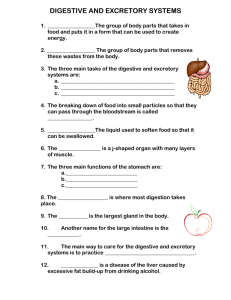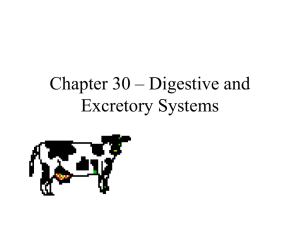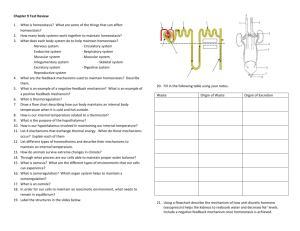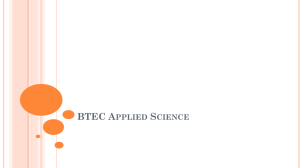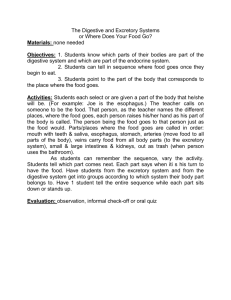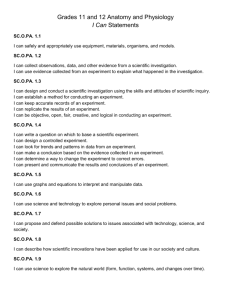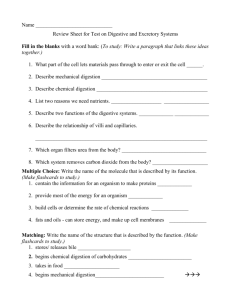File - Leo Burke Academy
advertisement
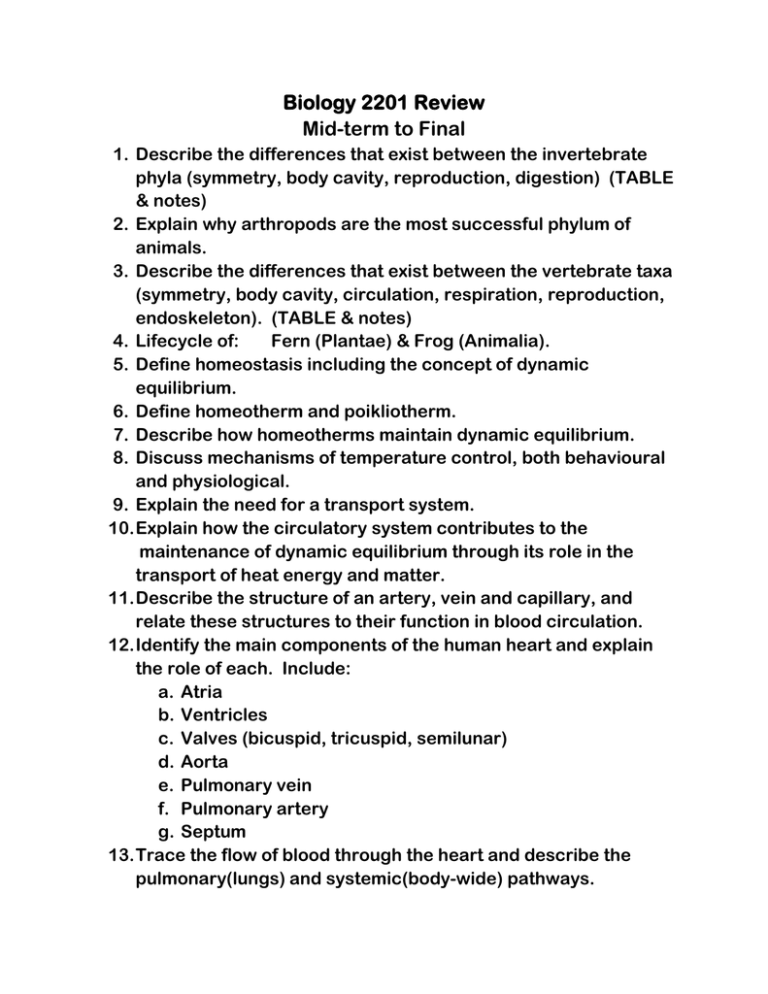
Biology 2201 Review Mid-term to Final 1. Describe the differences that exist between the invertebrate phyla (symmetry, body cavity, reproduction, digestion) (TABLE & notes) 2. Explain why arthropods are the most successful phylum of animals. 3. Describe the differences that exist between the vertebrate taxa (symmetry, body cavity, circulation, respiration, reproduction, endoskeleton). (TABLE & notes) 4. Lifecycle of: Fern (Plantae) & Frog (Animalia). 5. Define homeostasis including the concept of dynamic equilibrium. 6. Define homeotherm and poikliotherm. 7. Describe how homeotherms maintain dynamic equilibrium. 8. Discuss mechanisms of temperature control, both behavioural and physiological. 9. Explain the need for a transport system. 10. Explain how the circulatory system contributes to the maintenance of dynamic equilibrium through its role in the transport of heat energy and matter. 11. Describe the structure of an artery, vein and capillary, and relate these structures to their function in blood circulation. 12. Identify the main components of the human heart and explain the role of each. Include: a. Atria b. Ventricles c. Valves (bicuspid, tricuspid, semilunar) d. Aorta e. Pulmonary vein f. Pulmonary artery g. Septum 13. Trace the flow of blood through the heart and describe the pulmonary(lungs) and systemic(body-wide) pathways. 14. Identify the main components of blood and explain the role of each. Include: a. Erythrocytes b. Leukocytes c. Platelets d. Plasma 15. Describe disorders linked to the circulatory system and their effect on the homeostasis of the system and organism as a whole. Include: a. Hypertension b. Atherosclerosis c. Arteriosclerosis 16. Describe the progress from bypass surgery to modern techniques. Include: a. Shunts b. Angioplasty c. Clot-busting drugs 17. Explain the need for a respiratory system in humans. 18. Identify and state the function of : a. Nasal cavity b. Trachea c. Bronchi d. Bronchioles e. Alveoli f. Diaphragm 19. Investigate the mechanisms of inhalation/exhalation and the regulation of the breathing cycle. 20. Describe disorders linked to the respiratory system. Include: a. Lung cancer b. Asthma c. Pneumonia 21. Identify the impact of environmental factors on the respiratory system on an asthmatic: a. Cigarette smoke b. Allergens (dust, mould, food) c. Petrochemical fumes/perfumes 22. Describe the purpose and functioning of the digestive system. 23. Define mechanical and chemical digestion and explain the relationship between them. 24. Identify the major organs and glands of digestion and investigate their role in the digestive process. Include: a. Salivary glands b. Stomach c. Liver d. Pancreas e. Gall bladder f. Small intestine g. Large intestine 25. Trace the pathway of food through the human digestive tract and explain the efficiency of its structure: a. Teeth b. Taste buds c. Tongue d. Mucous lining e. Sphincters f. Villi g. Peristalsis 26. Identify the six basic nutrients (and the source of each): a. Carbohydrates b. Lipids c. Proteins d. Vitamins e. Minerals f. Water 27. Discuss the general role of enzymes and secretions, and the role of these substances pertaining to the digestive system. 28. Know the basic structural units of carbohydrates, lipids and proteins. 29. Describe disorders and the treatment of disorders linked to organs of the digestive system and their effect on the homeostasis of the system and the organism as a whole. Include: a. Ulcers b. Gall stones c. Ileitis/colitis 30. Evaluate how nutritional deficiency and starvation diets such as bulimia and anorexia nervosa can adversely affect the dynamic equilibrium. 31. Explain how the excretory system helps maintain homeostasis, including how the following act as organs of excretion: a. Lungs b. Skin c. Liver d. Kidneys 32. Explain the role of the kidney as an excretory organ in removing metabolic wastes from the body. 33. Identify and describe the main structures of the human urinary system including kidney, ureter, bladder and urethra. 34. Identify and describe the internal structure and function of the kidney, including the cortex, medulla and pelvis. 35. Identify and describe the function of the glomerulus. 36. Identify and explain the function of the parts of a nephron. Include: a. Bowman’s capsule b. Loop of henle c. Tubules – proximal and distal d. Collecting duct 37. Describe disorders linked to the excretory system and their effect on the homeostasis of the system and the organism as a whole. Include: a. Kidney stones b. Kidney infections c. Bladder infections 38. Briefly explain how dialysis works, and briefly explain why dialysis is a temporary measure for treating kidney disease. 39. Explain the meaning of antigen (allergen) and antibody, and their role in an allergic reaction. 40. Explain the complete immune response: a. 1st line of defence (physical and chemical barriers) b. 2nd line of defence (inflammatory response) c. 3rd line of defence (immune response) 41. Compare the role of white blood cells in the defence process including phagocytes and lymphocytes. 42. Identify how autoimmune disorders cause diseases such as rheumatoid arthritis, asthma. 43. Describe how population growth is dependent upon the difference between natality and mortality rates and a balance between emigration and immigration. 44. Distinguish between density dependent and density independent factors. 45. Explain how biotic potential and carrying capacity interact in population dynamics. 46. Examine and label the sections of an S-shaped (logistic) and Jshaped (exponential) growth curve: a. Lag b. Exponential c. Equilibrium 47. Compare how J & S curves describe the general population growth patterns observed in animal populations. 48. Explain the predator-prey cycle with respect to population growth curves. 49. Describe the limiting factors within the human population: a. Space b. War c. Disease d. Poverty 50. Evaluation Earth’s carrying capacity, considering human population growth and it’s demands on natural resources. 51. Determine the current growth rate of the human population and the projected growth rate 52. Investigate the demands that will be placed upon Earth’s natural resources by future population growth. 53. Explain how technological developments have raised, and continue to raise, the carrying capacity of Earth. 54. Describe the four phases of demographic transition. 55. Propose courses of action on the social issue of global population control, taking into account an array of perspectives, including that of sustainability.

